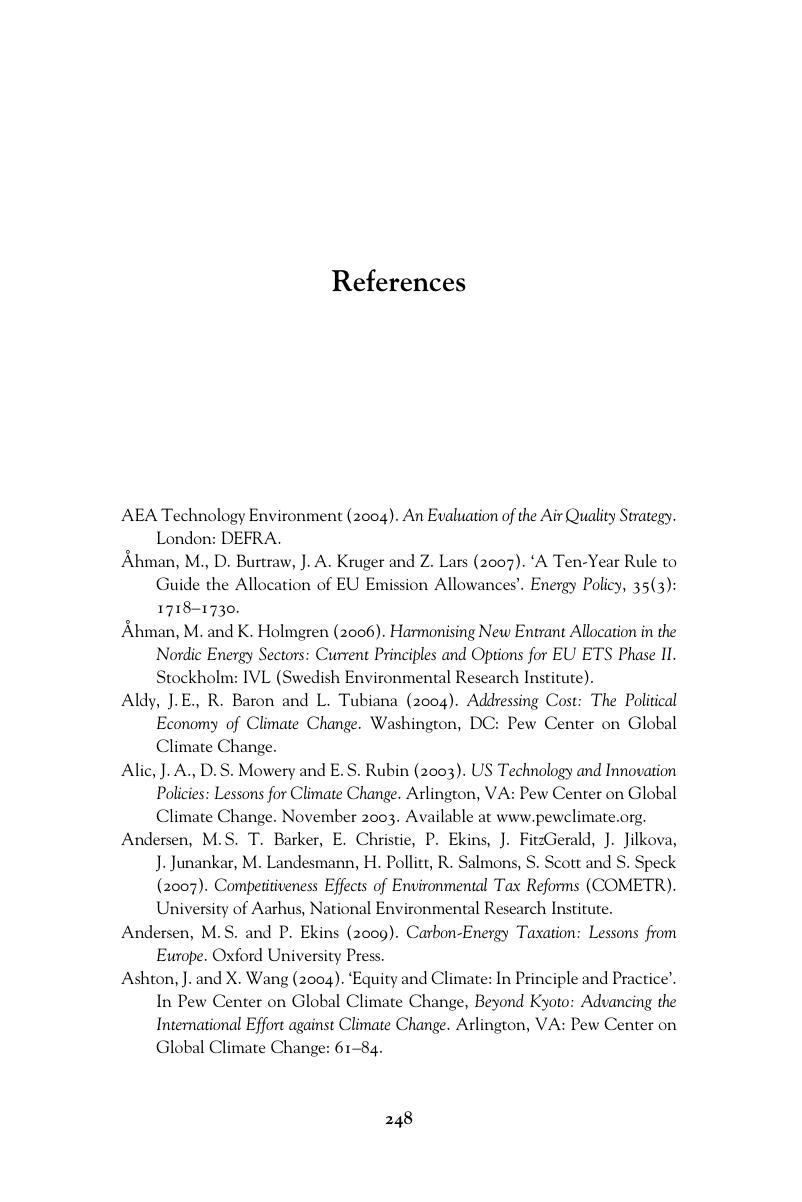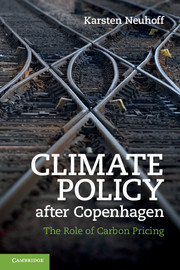Book contents
- Frontmatter
- Contents
- List of figures
- List of tables
- List of boxes
- Acknowledgements
- List of abbreviations
- 1 Introduction
- 2 The role of a climate policy mix
- 3 Implementing a carbon price: the example of cap and trade
- 4 Shifting investment to low-carbon choices
- 5 Co-operation among developed countries: a role for carbon markets?
- 6 A world of different carbon prices
- 7 International support for low-carbon growth in developing countries
- 8 Conclusion
- References
- Index
- References
References
Published online by Cambridge University Press: 05 June 2012
- Frontmatter
- Contents
- List of figures
- List of tables
- List of boxes
- Acknowledgements
- List of abbreviations
- 1 Introduction
- 2 The role of a climate policy mix
- 3 Implementing a carbon price: the example of cap and trade
- 4 Shifting investment to low-carbon choices
- 5 Co-operation among developed countries: a role for carbon markets?
- 6 A world of different carbon prices
- 7 International support for low-carbon growth in developing countries
- 8 Conclusion
- References
- Index
- References
Summary

- Type
- Chapter
- Information
- Climate Policy after CopenhagenThe Role of Carbon Pricing, pp. 248 - 263Publisher: Cambridge University PressPrint publication year: 2011



